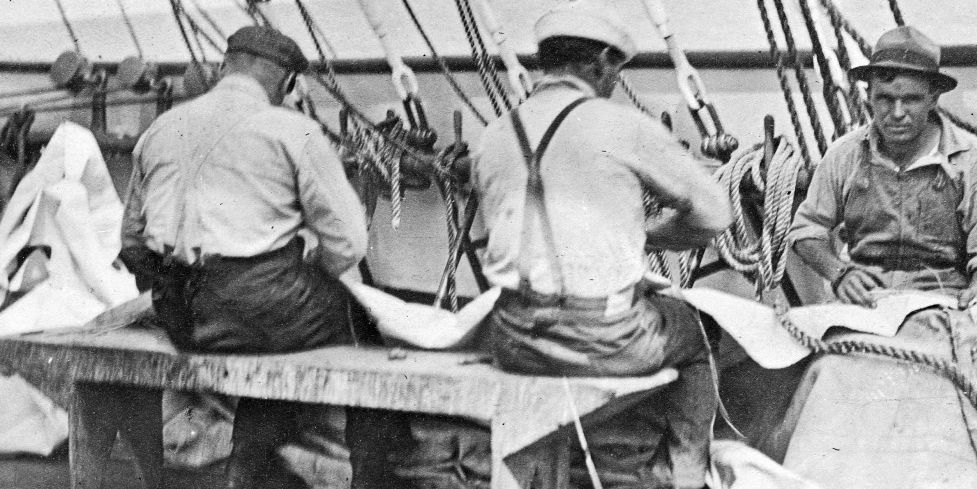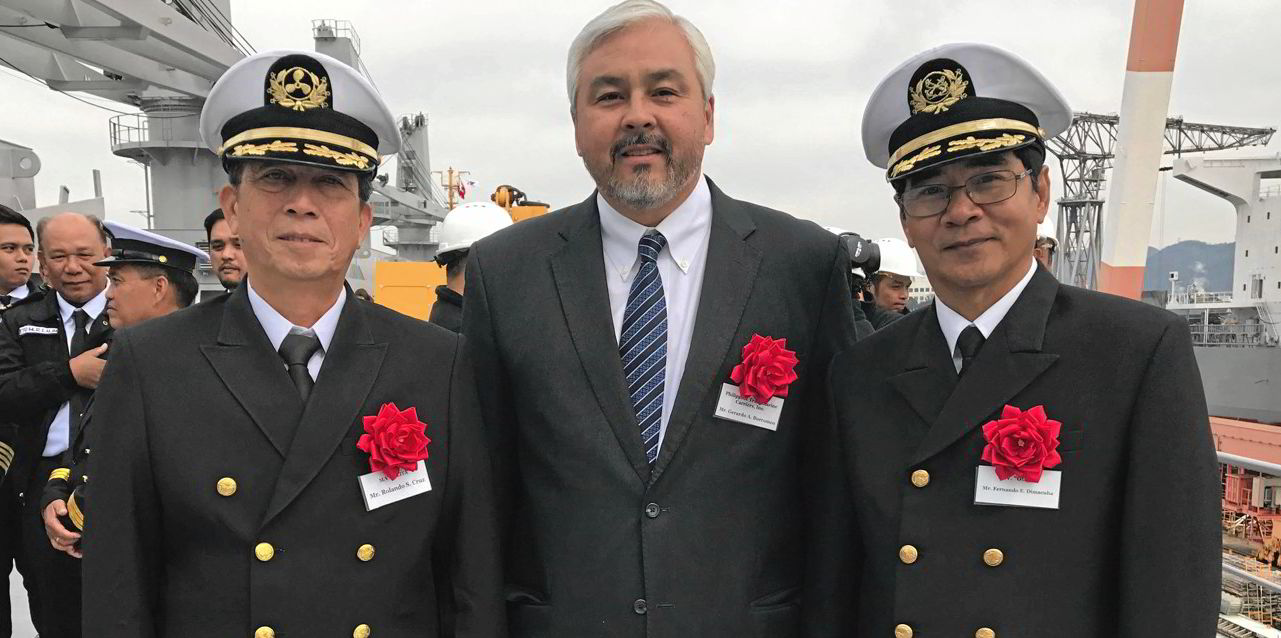Rough seas, demanding schedules, threats to life and limb and months away from family can make things difficult and perilous for the seafarers plying the world’s oceans.
And things are going to get harder as shipping contends with the demands of decarbonisation and digitalisation while still suffering intensified pressures from Covid-19 and a labour shortage.
“The pandemic really just put a huge exclamation point on what was already a problem,” says Jason Zuidema, executive director at the North American Maritime Ministry Association and general secretary of the International Christian Maritime Association.

Before the pandemic, seafarers were already dealing with shore leave issues. Turnaround times for ships in port, plus limits placed on shore leave, were made worse in the US, where the 9/11 terrorist attacks in New York in 2001 further reduced the time seafarers were able to spend away from ships, Zuidema says.
Covid-19 curtailed shore leave entirely, as governments locked seafarers out over fears that they could spread the virus, leading to the crew change crisis, in which hundreds of thousands of mariners were stuck on vessels working far past their contractual limits.
The pandemic has wound down and vaccination is now widespread, so things have largely returned to normal for most seafarers.
However, Zuidema says, “There are still very clear nationalities — Chinese seafarers, for example, the Russian, Ukrainian seafarers — for whom the uncertainty and those challenges still are very clear.”
Before the pandemic, the industry was already short of mariners, Wallem Shipmanagement crewing director Praveen Shukla tells TW+.
The shortage has led to bidding wars for labour, licensing authorities increasing the number of candidates taking exams and ship managers offering faster promotions without enough emphasis on experience and skills.
And the pandemic reportedly sped up the exit of some mariners from the labour pool, a trend worsened by Russia’s invasion of Ukraine.
Russia made up 10% of the global seafarer pool before the war winnowed down that figure, putting pressure on other major seafaring countries, notably India and the Philippines, according to Shukla.
Fabrizio Barcellona of the ITF says seafaring needs to be structured as a career for life with a pathway to working ashore after time at sea, to attract more women and young people who do not want to spend their entire lives away — “for a career at sea to be the launch pad to another career ashore”.
Wallem’s Praveen Shukla adds: “Nothing happens overnight in the shipping industry, as it takes time to build and deliver a ship with a new technology. Industry requires a collaborative approach to share what it learns, if we want to ensure safety and sustainability for assets and personnel.”
Wallem, which recruits seafarers from India, the Philippines and Ukraine, is the only foreign company licensed to recruit, train and employ Chinese seafarers directly.
“Wages in these crew-supplying regions have risen as a result of the shortage in available personnel, but supply levels are still insufficient,” Shukla says.
The Philippines is the leading provider of seafarers to global shipping, with up to 450,000 Filipinos at sea at any one time, sending home roughly $16,700 each year in a country where the per capita annual income averages between $3,500 and $3,800.
The International Chamber of Shipping (ICS) and the International Transport Workers’ Federation (ITF) have suggested new sources of seafarers could be found in Africa and the Caribbean.
But Gerardo Borromeo, chief executive of Manila-based crewing and ship management company Philippine Transmarine Carriers (PTC) and the ICS vice chair for the Philippines, says money might not be enough in future. Long rotations at sea and a lack of internet connectivity to stay in touch with family and friends have taken the bloom off the rose.
“It has to start somewhere. The effort to go into Africa and the Caribbean is well placed, but the industry needs to make a case for why people in any region should consider a job in the shipping industry,” Borromeo says.
The shortage of seafarers is not going to go away. Claims were made at the COP27 climate conference last November suggesting as many as 800,000 seafarers will require additional training by the mid-2030s to handle alternative fuels.

If countries in Africa and the Caribbean are to become hubs for seafarers, they will need to establish training infrastructure.
There has been talk of setting up training centres in Ghana or Senegal. Borromeo says Vietnam, Thailand and Indonesia have expressed an interest as well.

But the largest question mark from a skills perspective will be learning how to handle and use alternative fuels safely with technologies that will require higher technical knowledge.
“Our future is dependent on ensuring there are next-generation Filipinos who want to go to sea,” says Borromeo. “We know there will be more digitalisation and automation on vessels, and combined with the new fuel types, you need a different kind of background and education.”
But he concedes it is difficult to know what kind of knowledge and qualifications they will need to adapt to the new technologies.
While the industry remains split on what mix of fuels will be used in the future — many ships have LNG as an option, while AP Moller-Maersk has pushed into methanol — the need for training persists, particularly with inherently dangerous fuels such as ammonia.
Shukla believes LNG is the most viable future fuel: “There is enough information available to identify future skill demands for seafarers and shore-based staff. We can see there is a sense of urgency on this front, and market leaders are getting into action.”
Fabrizio Barcellona, seafarers’ and inland navigation section coordinator for the ITF, warns that leaving decisions at the International Maritime Organization to the industry and governments might not be sufficient in future.
“There have been difficulties in the past translating some IMO decisions into proper training. Some companies have complained that seafarers coming on board are nowhere near ready to undertake the tasks for which they have been certified,” he says.
Barcellona tells TW+ the Maritime Just Transition Task Force has been asked by the Philippines to form an advisory board to help with training and educational capacity building to match future requirements of the Standards of Training, Certification & Watchkeeping for Seafarers and says the process will be repeated in other countries that need assistance.
“The European Maritime Safety Agency is also providing some training and the IMO is waking up and trying to put together an advisory group to ensure that the training standards are consistent everywhere,” he says.
Greater workforce diversity is also needed to help fill the gaps and bring in new skills.
Borromeo talks of the need to change the “mindset on the ship to cater to the needs of other genders”, which includes onshore systems to ensure crew scheduling can factor in child rearing and other issues.
PTC has its own training college where about 5% are women, but it would like to take the number to 20%.
“We need to balance the numbers so that three years on, they have a berth on a vessel,” he says.
PTC is trying to introduce women onto ships in pairs so that they can support each other while the working environment evolves.




